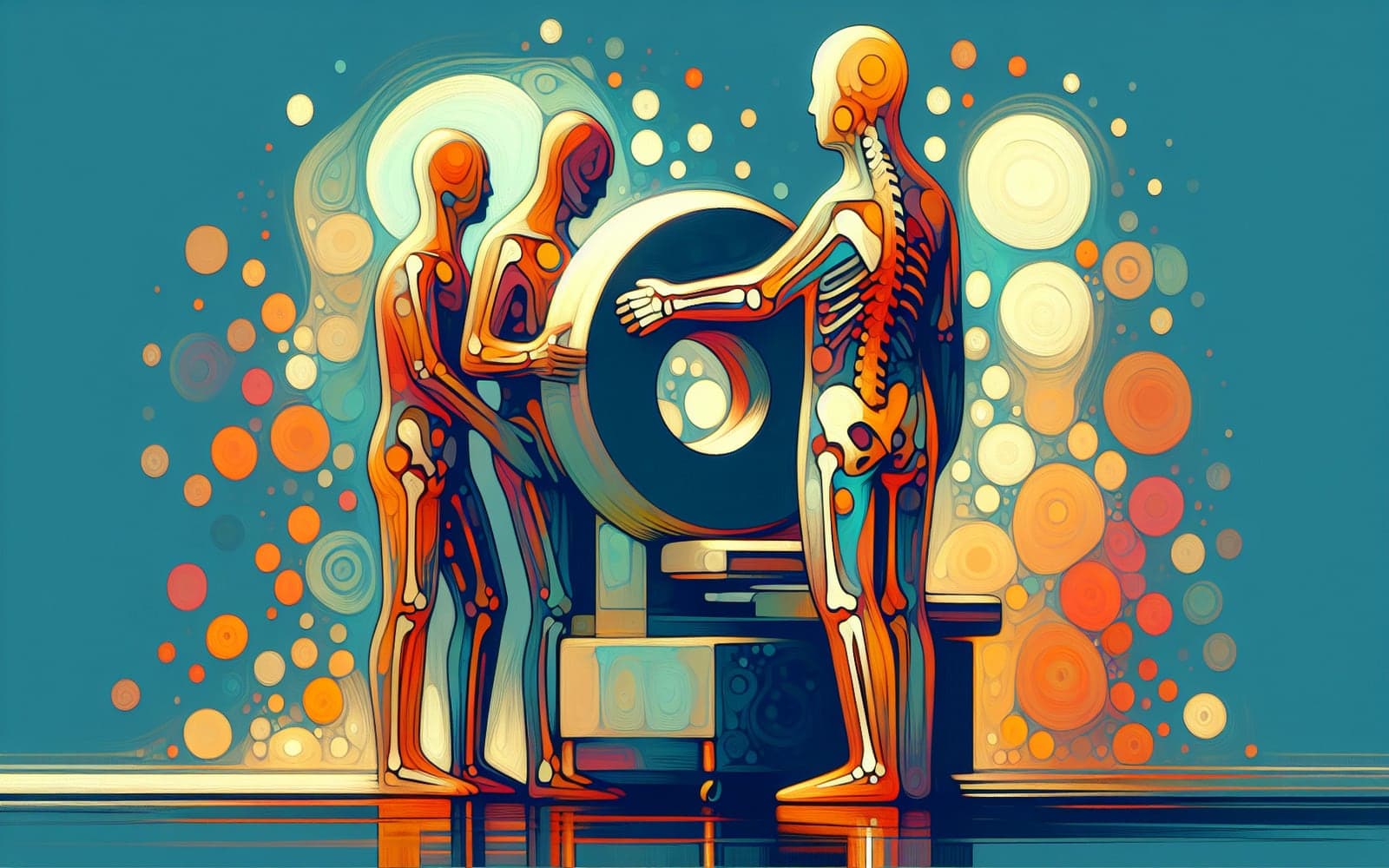How Does a DXA Scan Help Diagnose Osteoporosis?
Published: Sep 05, 2024
The DXA scan is a crucial tool in the diagnosis of osteoporosis, helping to measure bone density and assess fracture risk effectively.
Contents
The Basics of a DXA Scan
A DXA scan, or dual-energy x-ray absorptiometry, is a painless and non-invasive test that measures bone mineral density (BMD). It uses low-level x-rays to assess the strength of bones, particularly in the spine and hip, which are common areas affected by osteoporosis. This test is essential in diagnosing osteoporosis and monitoring bone health over time.
Interpreting DXA Scan Results
The results of a DXA scan are presented as T-scores and Z-scores. A T-score compares your bone density to that of a healthy young adult, with a score of -2.5 or lower indicating osteoporosis. A Z-score compares your results to others of your age, gender, and size, with low scores suggesting potential underlying conditions affecting bone health.

Why Get a DXA Scan?
A DXA scan is recommended for postmenopausal women, men over 50, and individuals with risk factors for bone loss. Early detection of low bone density can lead to timely interventions, helping to prevent fractures and manage osteoporosis effectively. It's a proactive step in maintaining long-term bone health.
Frequently Asked Questions
It's a test that measures bone mineral density.
Postmenopausal women and older adults with risk factors.
It shows how your bone density compares to a young adult's.
Yes, it uses low-level x-rays and is non-invasive.
Key Takeaways
A DXA scan is a vital tool in diagnosing osteoporosis and assessing your fracture risk.
Discuss with Doctronic whether a DXA scan is right for you and how it can aid in your bone health management.Related Articles
References
Cummings SR, Black DM, Nevitt MC, et al. Bone density at various sites for prediction of hip fractures. Lancet 1993; 341:72.
Genant HK, Engelke K, Fuerst T, et al. Noninvasive assessment of bone mineral and structure: state of the art. J Bone Miner Res 1996; 11:707.
Always discuss health information with your healthcare provider.

